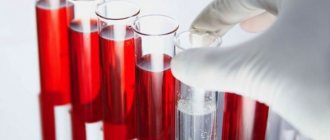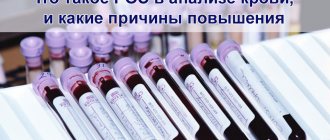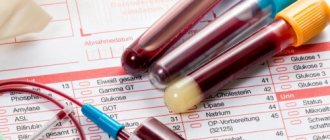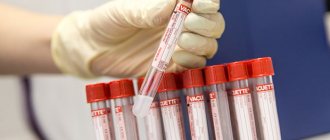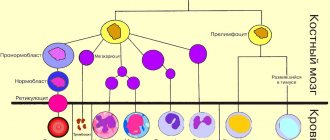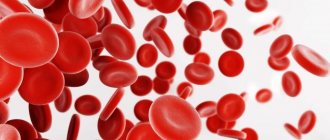Norm of leukocytes in the blood of children: Pexels A general blood test will help you understand whether everything is in order with the number of leukocytes in the blood in a child. Since they protect the body from infections, you should pay attention to this indicator. Experts explain that the number of leukocytes depends on the age of the child and can change under the influence of various factors.
What is a complete blood count?
A complete blood count (CBC) is a study whose main task is to monitor the number of blood cells of all existing types (leukocytes, platelets, erythrocytes and their varieties). Deviations in the results of the data obtained (up or down) are signs of the presence of an infection or the occurrence of some pathological process in the body.
Decoding the main indicators of a general blood test in children:
- The number of red blood cells - erythrocytes (RBC), which perform the most important function of delivering oxygen and removing carbon dioxide from the cells of various tissues of the body.
- Red blood cell distribution width (RDW or RDWc) is a measure of the variation in red blood cell size in the current assay. Anisocytosis is a condition in which red blood cells of both large and small sizes are present in the blood, which is a symptom of the development of various types of anemia. An indicator such as mean erythrocyte volume (MCV) can help obtain more accurate data on the type of anemia.
- The number of white blood cells - leukocytes (WBC). If necessary, it is possible to conduct a general blood test with a leukocyte formula - indicating the percentage of leukocytes of various forms. The leukocyte formula helps determine the cause of a malfunction in the production of leukocytes in the body.
- Hemoglobin level indicator (MCHC). Hemoglobin is a substance that is part of red blood cells and is involved in the delivery of oxygen to organs and tissues.
- The platelet count (PLT) is a blood platelet that determines the blood’s ability to “clott” and form blood clots.
- The hematocrit indicator is the “viscosity” of blood (HCT), the ratio of red blood cells to the total volume of blood (plasma).
- An indicator of the number of lymphocytes (LYM) - the main cells of our immune system. Lymphocytes are involved in the detection of a foreign agent entering the body and determine the body's immune response to its presence. The level of lymphocytes is the body's immunological response to an irritant.
- The ESR indicator is the erythrocyte sedimentation rate (the speed at which resting red blood cells settle to the bottom of a laboratory test tube).
Indicators of reference values (values defined as statistical averages and ranked as norms) are divided into three groups:
- indicators of normal blood test values for children;
- women;
- men.
Photo source: shutterstock.com
Decoding the leukocyte formula
An upward change in the number of neutrophils indicates the penetration of pathogenic bacteria or microscopic fungi. With severe infection, active production of segmented neutrophils occurs, but they do not have time to mature and enter the bloodstream in an immature form. This condition is a signal about the active work of the body’s defenses to fight infection.
In addition, the number of neutrophils increases with extensive burns, in the acute stage of pancreatitis, as well as with oncological pathology affecting the red bone marrow.
Lymphocytes react to a greater extent to the development of a disease of viral etiology. Thus, when a patient is infected with cytomegalovirus, rubella virus (Rubella virus) or chickenpox virus (Varicella Zoster Virus), an enhanced humoral response of the human immune system is observed. Oncology is another justification for abnormal lymphocyte counts as a result of the analysis. In the case of chronic malignant damage to lymphoid tissue, activation of the protective forces of the immune system is observed, aimed at destroying mutant cells.
Monocytes increase when:
- acute infectious process of viral etiology;
- oncopathology, which affects the bone marrow and lymph nodes, as well as the stomach and ovaries;
- pathologies of connective tissue of various etiologies;
- Besnier-Böck-Schaumann disease primarily affects lung tissue. The peculiarity of the disease is a long asymptomatic course and the impossibility of transmission to other people.
In turn, eosinophils are most sensitive to the penetration of allergens, which can cause the development of allergic shock. More than 1 thousand allergens are known; they can be inhalant, animal, plant, medicinal, mold or food. In addition, segmented eosinophils also respond to parasitic infestation by helminths.
According to statistics, basophils relatively rarely rise to critical values. Possible justifications: severe oncological lesions of the patient with the development of concomitant diseases, as well as allergic shock.
Read further: Leukocyte blood count - decoding in adults and children, norms of indicators
Symptoms of leukocytosis
Leukocytosis is a manifestation of the disease. When the first signs of leukocytosis are detected, it is necessary to conduct extensive laboratory and instrumental diagnostics of the patient in order to establish the main diagnosis. You should pay attention to the main symptoms of leukocytosis in a child:
- weakness and fatigue, which is not a consequence of excessive physical or emotional overload;
- high body temperature;
- sweating;
- bruises and hemorrhages of unknown etiology;
- complaints of pain in certain areas and organs of the body;
- a sharp decrease in appetite and weight loss.
Reference values for general blood test indicators in children
The values of the main indicators of the norm of a general blood test in children by age are in the table: the norm of leukocytes, lymphocytes, platelets, erythrocytes, hemoglobin, ESR.
| Indicator (decoding) | Child's age | ||||||
| 1 day | 1 month | 6 months | 1 year | from 1 to 6 years | from 7 to 12 years | from 13 to 15 years old | |
| Red blood cells (RBC) *1012/l, tera/liter | 4,3-7,6 | 3,8-5,6 | 3,5-4,8 | 3,6-4,9 | 3,5-4,5 | 3,5-4,7 | 3,6-5,1 |
| Platelets (PLT) *109/l | 180-490 | 180-400 | 180-400 | 180-400 | 160-390 | 160-380 | 160-360 |
| White blood cells (WBC) *109/l | 8,5-24,5 | 6,5-13,5 | 5,5-12,5 | 6,0-12,0 | 5-12 | 4,5-10,0 | 4,3-9,5 |
| Hemoglobin (MCHC) g/l | 180-240 | 115-175 | 110-140 | 110-135 | 110-140 | 110-145 | 115-150 |
| ESR mm/h | 2-4 | 4-8 | 4-10 | 4-12 | 4-12 | 4-12 | 4-15 |
| Lymphocytes (LYM) % | 12-36 | 40-76 | 42-74 | 38-72 | 26-60 | 24-54 | 25-50 |
Preparing for analysis
The cellular composition of blood is the most sensitive to all external factors, therefore, in order to obtain the most reliable results, it is necessary to properly prepare the child for the donation of biomaterial. Preparation rules:
- the biomaterial must be donated strictly on an empty stomach; at least 6 hours must pass between the last meal and the donation procedure;
- It is necessary to give the baby clean, non-carbonated water. This will reduce the risk of hemolysis in vitro, and will also greatly facilitate the collection of biomaterial;
- limit physical and emotional stress, which changes the functioning of the nervous and endocrine systems.
Parents often ask how they take blood for general analysis from children? For a general blood test and for calculating the leukocyte formula, venous blood (collected from the cubital vein in the bend of the elbow, in newborns - from the vein of the head) or capillary blood (taken from the ring finger) is suitable. The number of white blood cells is determined by flow cytometry. The execution time for private and public laboratories does not exceed 1 day.
What do violations of norms in a blood test indicate?
Violations of the above OAC norms in children may indicate either a slight illness in the child or the development of a serious and sometimes fatal disease.
Only a doctor can evaluate the totality of all factors, including the full picture of the analysis performed, the general condition of the baby, his age, the presence or absence of somatic diseases or congenital conditions, etc.
Do not try to independently evaluate the results obtained and draw conclusions, much less self-medicate. Delay in receiving quality and professional treatment can cost your child his life.
Leukemia
Leukemia refers to cancers of the blood, the causes of which have not yet been fully determined. Leukemia (or leukemia) is a malignant tumor process in the hematopoietic and lymphatic tissue.
The likelihood of a complete recovery and return of the child to normal life directly depends on the timing of seeking medical help. What could be a signal that there are serious problems? Deviations in the general blood test:
- a significant drop in red blood cell levels;
- decreased platelet levels (2.5 times lower than normal);
- drop in hemoglobin level (sometimes 3 times);
- depending on the form of the disease, the leukocyte count can be highly elevated or, conversely, catastrophically low;
- a sharp increase in ESR.
Allergic manifestations
Any allergic manifestations, from the most minor to those requiring urgent medical attention, are reflected in the indicators of a general blood test.
The presence of foreign allergens in the body does not go unnoticed.
- the number of leukocytes increases;
- ESR increases slightly;
- the number of eosinophils (one of the types of leukocytes), which are considered the main indicator of allergies in a blood test, increases sharply;
- the level of ferritin, a specific protein, increases as the body’s response to the inflammatory process;
- all other indicators remain practically within normal limits.
Photo source: shutterstock.com
Thrombocytosis
A number of diseases, the main indicator of which can be considered a change in the composition of the blood, where platelets are significantly increased (in some cases, the level of platelets can be increased by 3-4 times). Among the most common causes of thrombocytosis may be:
- presence of tumor diseases;
- severe blood loss;
- acute inflammation or infectious diseases;
- disruption (at the gene level) of the production of activated protein C, which ensures the fluid properties of blood.
Worm infestations
Infection with parasites, if not treated in a timely manner, can have very serious consequences. Some specialists from European medical organizations believe that the presence of helminthic infestation (worms) in the human body reduces its lifespan by 10-15 years.
If infection with parasites (for example, Giardia) occurs, this immediately affects the composition of the child’s blood. The child’s body is especially sensitive to this type of infection, so based on the results of a child’s blood test, the following conclusions can be drawn:
- hemoglobin levels decrease;
- the level of eosinophils increases;
- there is a significant increase in ESR.
Atypical leukocytes
The appearance of atypical leukocytes in a child’s analysis (differences in shape, size, color, change in nucleus) may indicate:
- about the presence of a viral or bacterial infection in the child’s body (for example, sore throat);
- about intoxication of the body;
- about the development of pathological tumor processes or the presence of genetic pathology.
Hypochromic anemia
Hypochromia or hypochromic anemia is a violation of the color of a blood smear (red blood cells) taken for analysis. Hypochromia is closely related to another disorder, microcytosis - the predominance of small red blood cells in the blood.
Such violations indicate the presence of a systemic disease that provokes the appearance of one of the types of anemia.
Mononucleosis
Mononucleosis is an acute viral disease that requires urgent medical treatment.
- the level of lymphocytes increases (by more than 40%);
- the level of monocytes increases (by more than 10%).
Increased white blood cell count in a child
When there are too many leukocytes in the blood, we are talking about a phenomenon called leukocytosis. What do elevated white blood cells mean in children? Pediatrician Den Brennan explains that an increase in their number may be associated with: a bacterial, viral or fungal infection; tumor processes; allergies; helminthiasis; blood diseases; inflammatory processes; state of shock; burns, wounds and blood loss; purulent formations; internal bleeding.
In any case, it is important to donate blood again and conduct a detailed diagnosis with a doctor to identify other symptoms and, if necessary, prescribe treatment.
